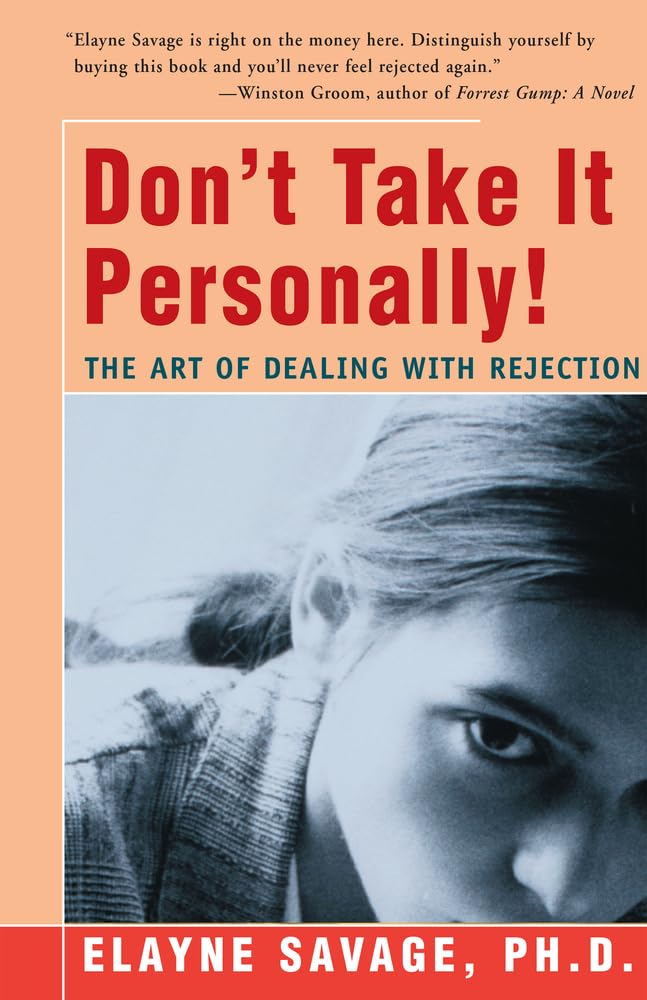By Elayne Savage, PhD
So much is in the news lately about Criminal Justice, death row and lethal injections – even bringing back electric chairs, gas chambers and firing squads. And yet, there are also stories about exonerations and even stray cats in prisons.
I find myself flashing back to my early prison experiences – I’ve wanted to write about these for a long time, and I’d love to share these images with you.
When Taking Things Personally Leads to Jail Time
A few years ago I was presenting skill-building workshops within the walls of San Quentin State Prison. The series was on what I know best: how not to take rejection and disappointment so personally. This voluntary Success Programs’ skill-building course was presented to highly motivated medium security inmates. Most of them were in for non-violent crimes — such as stealing to support their addictions.
I really enjoyed working with these men and learned much from them sharing their taking-things-personally experiences. As I became a familiar face I was invited to enter the dorm without an escort and announce class on the loud speaker. This group of regulars immediately gathered around me. As we crossed the yard to the classroom I couldn’t help but have an image of collecting my ducklings!
I noticed something rather striking during my time in San Quentin: inmates confided they have more freedom to be themselves inside prison then they did on the outside. I could see it in class – they were free to offer comfort to each other, to put their arms around each other.
What an eye-opener this was for me. Imagine. Having more freedom behind bars!.
They would talk about how being on the inside gave them the rules and structure they didn't have on the outside. And they say they function better with this feeling of safety to be themselves.
My book ‘Don’t Take It Personally!’ was popular reading from the prison library and I could tell they ‘got’ the message of the book and workshops when several told me:
“If I’d understood about my early rejection and why I take things so personally, the pressure wouldn’t have led me to go out and steal for drugs.”
Alabama’s “Yellow Mama”
My first prison-related experience was decades ago on a University of Alabama Sociology class field trip to the State prison. That was the day I volunteered to sit in the brightly painted wooden electric chair, “Yellow Mama.” I thought getting to sit in it was a lark until the guards recounted how they repaint it after each electrocution. This adventure quickly turned into something creepier than I had expected.
Wisps of this memory came floating back when I read of the recent release in Alabama of Ray Hinton, 30 years on death row and awaiting execution. New ballistics test have determined he was wrongfully convicted.
Looks like he was released just in time – Alabama is considering dusting off Yellow Mama and bringing her down from the attic to resume electrocutions.
Exoneration of the Wrongfully Incarcerated
You have probably heard of the Innocence Project, which Barry Scheck and Peter Neufeld founded 20 years ago to arrange DNA testing that can prove wrongful convictions.
Once inmates are exonerated and released, however, they often have no usable skills in a society that has changed greatly over those years of incarceration.
So about 10 years ago, a handful of us met in Human Rights Advocate Lola Vollen’s living room to start the Life After Exoneration Program (LAEP.)
We began developing resources for rebuilding lives of prisoners who had been exonerated but had no real skills to face the outside world. We began the process of arranging support services: housing, employment, computer skills and access to medical care. You can read about the program in the link below.
I’ve wanted to share these stories with you for a long time but couldn’t figure out a way to tie them together. The Alabama exoneration provides a connecting thread. Now there is a new story that is crying out to be included.
Shelter Cats Find Freedom Behind Bars
Have you read the touching article about the stray cats at Pendleton Correctional Facility in Indiana? A new program has 12 previously caged animal shelter cats roaming free in the prison office. They are often found on the climbing structures built by prisoners or curled up in the laps of the prisoners who come in to care for them.
Cat duty “is one of the best parts of my week,” prisoner Charles Barker offers. “It’s very therapeutic. After I did this a couple times, you spend your off days wishing you could go back.”
“It’s kind of ironic that these cats had to come to prison to have some freedom,” says another prisoner, Barry Matlock.
Yep. That's the truth! Cats . . . and humans, too.
Have you, too, had experiences with the prison system?
What are your thoughts, ideas about exoneration?
What do you think of the stray-cats-in-prison story?
More about the cats getting a new home:
More about the Life After Exoneration Program:
More about the release of Alabama prisoner:
http://abcnews.go.com/US/wireStory/state-lacks-evidence-frees-man-30-years-death-30093821
© Elayne Savage, PhD
Until next time,
Elayne
Elayne Savage is the author of ground-breaking relationship books published in 9 languages.
Both books are now available on Kindle!
To order DON'T TAKE IT PERSONALLY! THE ART OF DEALING WITH REJECTION
To order BREATHING ROOM — CREATING SPACE TO BE A COUPLE
REPRINTING THESE e-LETTERS
You can use the articles in 'Tips from The Queen of Rejection'® as long as you include an attribution and, whenever possible, a live link to my website. I'd appreciate if you'd notify me where and when the material will appear.
The attribution should include this information: Elayne Savage, PhD is a communication coach, keynote speaker, and trainer, practicing psychotherapist and author of Don't Take It Personally! The Art of Dealing with Rejection and Breathing Room – Creating Space to Be a Couple.
To find out more about my speaking programs, coaching and consultation services visit: //www.QueenofRejection.com or call 510-540-6230 if you or your group can benefit.
Contacting Elayne
I welcome your feedback as well as suggestions for topics you'd like to see addressed in this e-letter.
Here's how you can reach me:
510-540-6230
www.QueenofRejection.com
For more communication and rejection tips, you can follow me:
Twitter@ElayneSavage
LinkedIn.com/in/elaynesavage
Facebook.com/elayne.savage


Leave a Reply to Elayne Savage, PhD Cancel reply